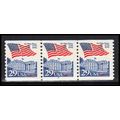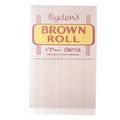Wilton, Salisbury, Wiltshire - St. Mary & St. Nicholas Church - local postcard
- Condition : Used
- Dispatch : 2 Days
- Brand : None
- ID# : 143196609
- Quantity : 1 item
- Views : 314
- Location : United Kingdom

- Seller : justthebook (+1703)
- Barcode : None
- Start : Sat 26 Sep 2015 05:22:04 (EDT)
- Close : Run Until Sold
- Remain : Run Until Sold
Checks/Cheques
 for 1 item(s) edit
for 1 item(s) edit
Shipping Calculator
More Listings from This Seller view all
Seller's Description
- Postcard
- Picture / Image: St. Mary and St. Nicholas Church, Wilton, Salisbury, Wiltshire
- Publisher: the church? / printed by Graphect Print, Wooton Bassett
- Postally used: no
- Stamp: n/a
- Postmark(s): n/a
- Sent to: n/a
- Notes / condition:
Please ask if you need any other information and I will do the best I can to answer.
Image may be low res for illustrative purposes - if you need a higher definition image then please contact me and I may be able to send one. No cards have been trimmed (unless stated).
------------------------------------------------
Postage & Packing:
Postage and packing charge should be showing for your location (contact if not sure).
No additional charges for more than one postcard. You can buy as many postcards from me as you like and you will just pay the fee above once. Please wait for combined invoice. (If buying postcards with other things such as books, please contact or wait for invoice before paying).
Payment Methods:
UK - PayPal, Cheque (from UK bank) or postal order
Outside UK: PayPal ONLY (unless otherwise stated) please. NO non-UK currency checks or money orders (sorry).
NOTE: All postcards are sent in brand new stiffened envelopes which I have bought for the task. These are specially made to protect postcards and you may be able to re-use them. In addition there are other costs to sending so the above charge is not just for the stamp!
I will give a full refund if you are not fully satisfied with the postcard.
----------------------------------------------
Text from the free encyclopedia WIKIPEDIA may appear below to give a little background information (internal links may not work) :
*************
Wilton is a town in Wiltshire (of which it was once the county town), England, with a rich heritage dating back to the Anglo-Saxons. Today it is overshadowed by its larger and more famous neighbour, Salisbury, but still has a range of notable shops and attractions, including Wilton House.
The confluence of the rivers Wylye and Nadder is at Wilton.
The history of Wilton dates back to the Anglo-Saxons in the 8th century AD, and by the late 9th century it was the capital of Wiltunscire, a shire (or 'share') of the Kingdom of Wessex. It remained the administrative centre of Wiltshire until the 11th century. Wilton was of significant importance to the church, with the founding of Wilton Abbey in AD 771 and a number of other establishments. In AD 871 Alfred the Great fought and lost an important battle there against the Danish armies, leaving him in retreat for several years.
Despite further attacks, Wilton remained a prosperous town, as recorded in the Domesday book. The building of Salisbury Cathedral nearby, however, caused Wilton's decline, as the new site of Salisbury, with a new bridge over the River Avon, provided a convenient bypass around Wilton on the trade routes.
Wilton Abbey was surrendered to Henry VIII in 1539 during the Dissolution of the Monasteries, and in 1541 much of the estate was granted to the Earl of Pembroke, upon which Wilton House was built.
By the 17th century, weaving had become a large trade, and the carpet industry began in 1741, when two French weavers were brought in by the 9th Earl of Pembroke to teach the local people new skills. Carpet weaving prospered until 1815, when peace following the Napoleonic wars introduced European competition. The Wilton Royal Carpet Factory was founded at the turn of the century, with the help of the then Lord Pembroke, to rescue the previous carpet factory that had fallen into financial difficulty. The carpet factory continued to operate until 1995, when it closed temporarily after a takeover. The factory re-opened, although it was unable to retain the Wilton Royal prefix.
An outbreak of smallpox in 1737 killed 132 people.[2] Local folklore claims that the outbreak was believed to be associated with the witchcraft of the four Handsel sisters, who were summarily murdered and buried in Grovely Wood.[citation needed]
Wilton had two railway stations. One (later known as Wilton North) was opened by the Great Western Railway in 1856 on their line from Westbury to Salisbury, and another (later known as Wilton South) opened by the Salisbury and Yeovil Railway in 1859 on the West of England Main Line from London to Exeter. The arrival of the railways led to increased prosperity. The stations closed in 1955 and 1966 respectively; the nearest station is now at Salisbury.
In 1894 Wilton absorbed the western end of the neighbouring parish of Fugglestone St Peter, the rest going into a new parish of Bemerton.[3]
The headquarters of Land Forces was at Wilton, taking advantage of the huge amount of military camps and the ranges of Salisbury Plain. The title of HQLF has varied several times since the 1960s.
The Church of England parish church of St Mary and St Nicholas was built as a replacement for St Mary's Church between 1841 and 1844 at the instigation of the Countess of Pembroke and her younger son Baron Herbert of Lea, designed by the architect Thomas Henry Wyatt in the Romanesque style, with considerable Byzantine influences. For a small town, the church is enormous, representing the wealth of its benefactors.
The most notable external feature of the church is the 105 feet (32 m) campanile. Many of the materials used in the church's construction were imported from Europe, including marble columns from Italy and 12th and 13th century stained glass from France.
type=printed
city/ region=salisbury
period=pre - 1914
postage condition=unposted
number of items=single
size=standard (140x89mm)
Listing Information
| Listing Type | Gallery Listing |
| Listing ID# | 143196609 |
| Start Time | Sat 26 Sep 2015 05:22:04 (EDT) |
| Close Time | Run Until Sold |
| Starting Bid | Fixed Price (no bidding) |
| Item Condition | Used |
| Bids | 0 |
| Views | 314 |
| Dispatch Time | 2 Days |
| Quantity | 1 |
| Location | United Kingdom |
| Auto Extend | No |


















